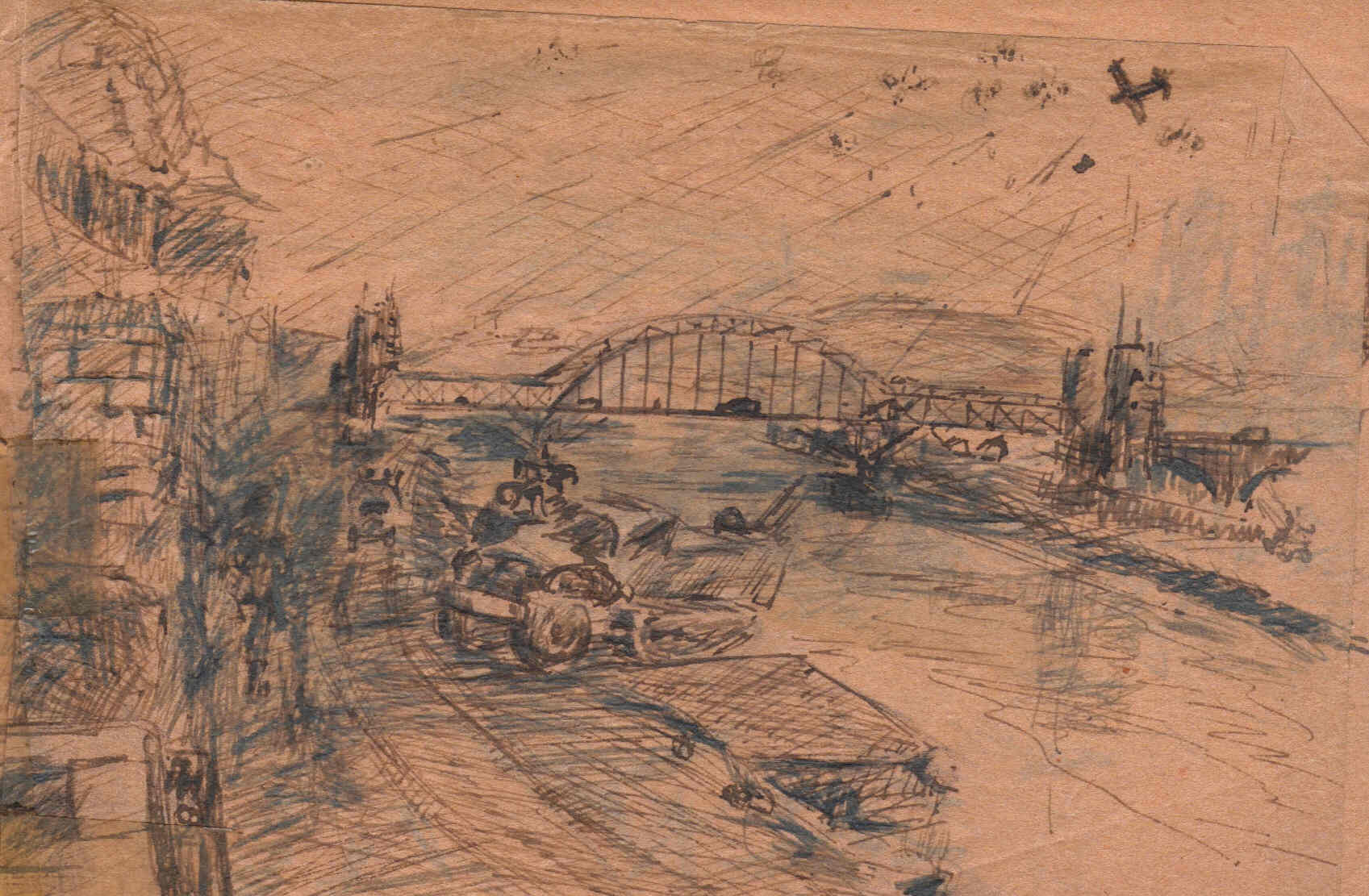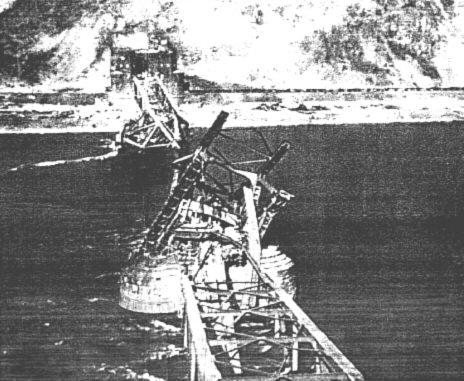Philip Orlando was there. He drew the sketches shown on the right.
One while the bridge was intact and the other after it had collapsed
The story of the battle is told at the bottom of this page




The capture of the Ludendorff Bridge at Remagen occurred during the closing stages of World War II.
Dates:
The battle and capture of the bridge at Remagen took place on March 7-8, 1945.
Battle Summary:
In March 1945, with the bulge caused by the German Ardennes offensive effectively reduced, the US 1st Army launched Operation Lumberjack. Designed to reach the west bank of the Rhine, US troops quickly advanced on the cities of Cologne, Bonn, and Remagen. Aware that the Rhine posed the last major geographic obstacle to Allied troops, Hitler ordered the bridges over the river destroyed. On the morning of March 7, lead elements of the 27th Armored Infantry Battalion, Combat Command B, US 9th Armored Division reached the heights overlooking the town of Remagen.
Looking down at the Rhine, they were stunned to find that the Ludendorff Bridge was still standing. Built during World War I, the railroad bridge remained intact with German forces retreating across its span. Initially, officers in the 27th began calling for artillery to drop the bridge and trap German forces on the west bank. Unable to secure artillery support, the 27th continued to observe the bridge. When word of the bridge's status reached General William Hoge, commanding Combat Command B, he issued orders for the 27th to advance into Remagen with support from the 14th Tank Battalion.
As American troops moved into the town, they expected the bridge to be blown by the Germans before it could be captured. These thoughts were reinforced when prisoners indicated that it was scheduled to be demolished at 4:00 PM. Already 3:15, the 27th raced to secure the bridge. As elements of Company A, led by Lieutenant Karl Timmerman, moved onto the bridge's approaches, the Germans, led by Captain Willi Bratge, blew a 30-foot crater in the roadway with the goal of slowing the American advance. Reacting swiftly, engineers using tank dozers began filling the hole.
As Timmerman and his men began pressing forward, Bratge attempted to destroy the bridge. A massive explosion rocked the span, lifting it from its foundations. When the smoke settled, the bridge remained standing, though it had suffered some damage. Though many of the charges had detonated, others had not due to the actions of two Polish conscripts who had tampered with the fuses. As Timmerman's men charged onto the span, Lieutenant Hugh Mott and Sergeants Eugene Dorland and John Reynolds climbed under the bridge to begin cutting the wires leading to the remaining German demolition charges.
Reaching the bridge towers on the west bank, platoons stormed inside overwhelming the defenders. Having taken these vantage points, they provided covering fire for Timmerman and his men as they fought across the span. The first American to reach the east bank was Sergeant Alexander A. Drabik. As more men arrived, they moved to clear the tunnel and cliffs near the bridge's eastern approaches. Securing a perimeter, they were reinforced during the evening. Pushing men and tanks across the Rhine, Hoge was able to secure the bridgehead giving the Allies a foothold on the east bank.
Aftermath:
Dubbed the "Miracle of Remagen," the capture of the Ludendorff Bridge opened the way for Allied troops to drive into the heart of Germany. Over 8,000 men crossed the bridge in the first twenty-four hours after its capture as engineers frantically worked to repair the span. Infuriated by its capture, Hitler swiftly ordered the trial and execution of the five officers assigned to its defense and destruction. Only Bratge survived as he had been captured by American forces before he could be arrested. Desperate to destroy the bridge, the Germans conducted air raids, V-2 rocket attacks, and frogman assaults against it.
In addition, German forces launched a massive counterattack against the bridgehead with no success. As the Germans were attempting to strike the bridge, the 51st and 291st Engineer Battalions built pontoon and treadway bridges adjacent to the span. On March 17th, the bridge suddenly collapsed killing 28 and wounding 93 American engineers. Though it was lost, a substantial bridgehead had been built up which was supported by the pontoon bridges. The capture of the Ludendorff Bridge, along with Operation Varsity later that month, removed the Rhine as an obstacle to the Allied advance.